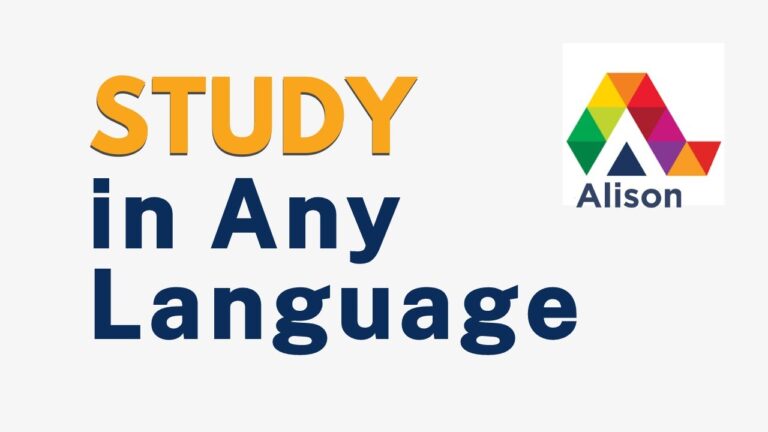What is OpenAI’s Sora app? Explaining the tool that amazed everyone!

In an era characterized by the pervasiveness of technology in all fields, the emergence of any technological breakthrough is no longer strange or unlikely to our minds, no matter how complex. At the forefront of these breakthroughs is artificial intelligence, which has left nothing humanly possible, performing it with a precision and efficiency that may even surpass humans in many cases.
Perhaps the most notable of these technological capabilities is a tool known as Sora, which transforms text descriptions into real-life videos filled with all the details we could possibly desire. Indeed, the world of video creation is undergoing a major transformation, fueled by the growing influence of artificial intelligence. AI tools no longer only simplify the video editing process, but also make it possible to create a video from scratch with just a few text commands.
In this article, we will delve into Sora, exploring its capabilities, applications, risks, and the profound impact it will have, extending beyond the world of entertainment and extending far beyond it to the world of business and industry.
What is Sora?
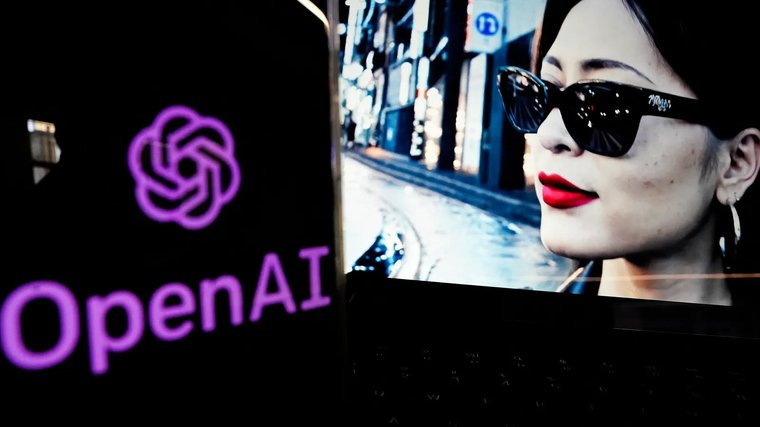
Sora is a text-to-video AI model developed by OpenAI, a leading AI research organization that developed the popular ChatGPT tool. Sora has the remarkable ability to generate realistic and creative videos based on textual descriptions.
Imagine describing a scene in detail in your head, and it comes to life right before your eyes! All you have to do is type what you want, and Sora can translate your words into a video featuring the scene, complete with motion, characters, and visual effects.
How does Sora work?
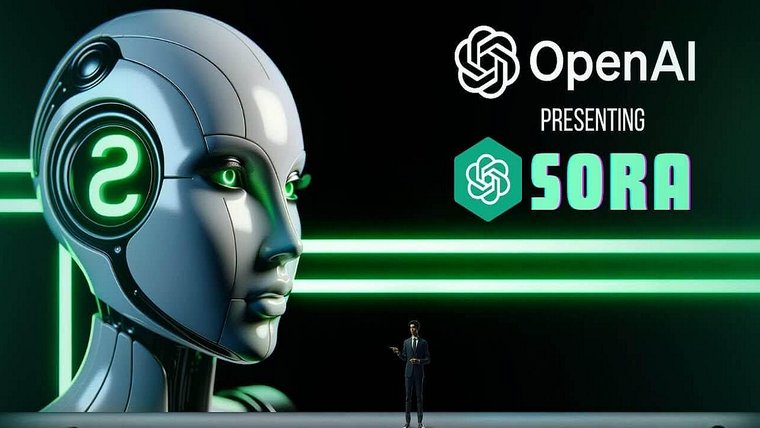
Like other AI models that convert text to images, such as DALL-E 3, StableDiffusion, and Midjourney, Sora is based on roughly the same theory of operation. This means it uses a combination of natural language processing (NLP), computer vision, and machine learning techniques to generate visual content from text inputs. Typically, Sora videos can be up to 60 seconds long.
Here’s how OpenAI Sora works:
- Diffusion Model:
A diffusion model is a type of generative model primarily used in computer vision tasks, specifically for image generation. Diffusion models—particularly those known as diffusion probabilistic models (DPMs)—propose a stochastic process to generate high-quality images. The main idea behind diffusion models is to simulate a series of transformations starting from a simple initial state (such as noise) and gradually improving it to a realistic image.
Without going into technical details, here’s a simplified overview of how a diffusion model typically works:
Initialization: The process begins with a noisy initial image, which is the basis used to generate the final, high-quality image.
Diffusion Process: The diffusion process consists of a series of steps where noise is gradually reduced in the image and detail is added to make it more like the real image. Each step involves carefully designed adjustments to the current image, iteratively improving it.
Annealing Schedule: The rate of noise reduction and detail addition is controlled by the annealing schedule. This schedule determines the dynamics of the diffusion process and affects the quality of the generated images.
Sampling: At each step of the diffusion process, samples are drawn from the conditional distribution for the next step given the current image. These samples are used to update the image for the next step.
Training: Diffusion models are trained to estimate likelihood, with the goal of maximizing the likelihood of the observed data (real images) within the model.
Generation: Once trained, the diffusion model can generate high-quality images. The diffusion process is performed over a certain number of steps to produce a realistic image.
Now, simply apply the diffusion model to the Sora tool. Imagine a video frame filled with static noise, like a blurry TV screen. This is where the Sora model comes into play, using the diffusion model to generate the final video through a series of steps.
Read also: Artificial Intelligence Algorithms | The Complete Guide
- Step-by-Step Enhancement:
Sora doesn’t generate the entire video at once. Instead, it works frame by frame. The following operations are performed for each frame:
It starts with that blurry image.
The noise is then gradually reduced and details are added based on your text description.
This process is done in small steps, with the image gradually improving with each step until it resembles the scene you described.
- Understanding Your Text:
For the Sora model to complete the image enhancement process, it needs to understand your text description to add these details to the blurry image. Therefore, the tool uses techniques such as natural language processing (NLP) to segment text and analyze words, their relationships, and the overall context. - Learning from data:
Sora was trained on a massive dataset of text-to-video pairs. This means the tool is provided with numerous examples of how specific words and phrases translate into visual elements in videos. By analyzing this data, the tool learns the relationship between language and visuals.
During training, the model minimizes the discrepancy and error rate between the generated videos and the actual videos in the dataset, often using techniques such as “adversarial training.” Once trained, the tool can accept text input and generate corresponding videos by feeding the text into the trained model, which then produces videos that match the provided descriptions.
Read also: What is Deep Learning?
- Video Generation:
Using information from your text description and knowledge from the training data, the Sora model refines the noisy frames step by step, ultimately generating a series of detailed images that make up the final video.
While Sora uses a diffusion model, it specifically uses a diffusion transformer, a type of model well-suited to handling data of variable length and resolution, such as video clips. It also uses techniques such as cascade diffusion and latent diffusion to generate videos efficiently.
Limitations of Using Sora
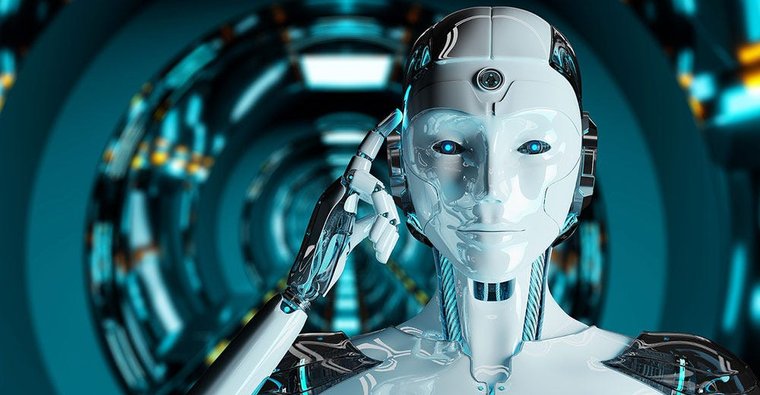
Despite its impressive capabilities, Sora—like any advanced technology—has some limitations that should be considered:
- Lack of explicit physical understanding:
While Sora can create visually appealing videos, it currently lacks a clear understanding of real-world physics. This means the model may not be accurate when simulating complex physical interactions, as subtle movements and reactions based on the laws of physics may not always be perfectly captured.
Furthermore, the model at its current stage cannot maintain perfect continuity. During long videos, maintaining the positions and behaviors of objects across each frame can be difficult, sometimes leading to inconsistencies.
- Limited customization and control:
Compared to some competing models, Sora offers a moderate level of customization. Users can provide detailed descriptions, including camera angles, lighting, and object placement, but the ability to adjust certain aspects may be more limited.
Here’s more: The Best AI Translation Tools in 2024
- Early Stage of Development:
Sora is still under development and its functionality is constantly evolving, meaning the user experience may not be as refined or user-friendly as some established platforms. Additionally, features such as comprehensive integration with other tools or platforms may not yet be readily available. - Limited Availability and Pricing:
OpenAI currently provides limited information regarding specific pricing models for Sora. As the technology matures and becomes commercially available, a clearer pricing structure and plans will likely be developed. - Ethical Considerations:
As with any powerful AI technology, ethical concerns must be taken into account, particularly regarding potential crimes such as video spoofing and the responsible use of generated content.
Despite these limitations, Sora remains a powerful and innovative tool with the potential to revolutionize how videos are created. As technology continues to evolve and address these limitations, Sora could become even more valuable in the world of video creation than text.
Applications of the Sora model

Sora’s potential applications span various creative and business fields, offering exciting possibilities for individuals and businesses alike. Here are some key use cases:
- Content Creation
Social Media Content: This includes creating engaging videos for platforms like YouTube, TikTok, or Instagram, even without filming footage.
Educational Videos: This involves explaining complex concepts or processes through visually appealing animations and simulations.
Storytelling and Animation: Instead of learning different animation software to flesh out your story, you can bring stories and ideas to life in seconds with Sora.
- Prototyping and Design
Even if AI video isn’t used in the final product, it can be useful for quickly presenting ideas. Filmmakers can use AI to create mockups of scenes before filming, and designers can create videos of products before they’re built.
Read also: The Most Important Ethics of Artificial Intelligence
- Training and Simulation
Simulations can be created for various industries, such as healthcare, aviation, and manufacturing, where creating realistic scenarios is difficult or expensive. Additionally, Sora can create virtual environments for training purposes in areas such as emergency response or military simulations. - Advertising and Marketing
Creating advertisements, promotional videos, and product demos is undoubtedly expensive. Therefore, AI text-to-video tools like Sora are an important factor in making this process much cheaper. For example, a residential development company could promote its housing units by hiring a drone to capture aerial footage of the site, or they could simply use AI, saving time and money. - Synthetic Data Generation
Synthetic data is often used in situations where privacy concerns prevent the use of real data. For digital data, common use cases are financial data and personally identifiable information. Access to these datasets should be tightly controlled, but instead, synthetic data with similar properties can be created and made publicly available.
One use of synthetic video data is to train computer vision systems. For example, synthetic data can be used to improve the performance of computer vision systems for unmanned aerial vehicles (UAVs) to detect buildings and vehicles at night and in bad weather. Tools like Sora make this process much cheaper and more accessible to a wider audience.
Explore: What are the pros and cons of artificial intelligence?
Risks of the Sora tool
Risks of the Sora tool
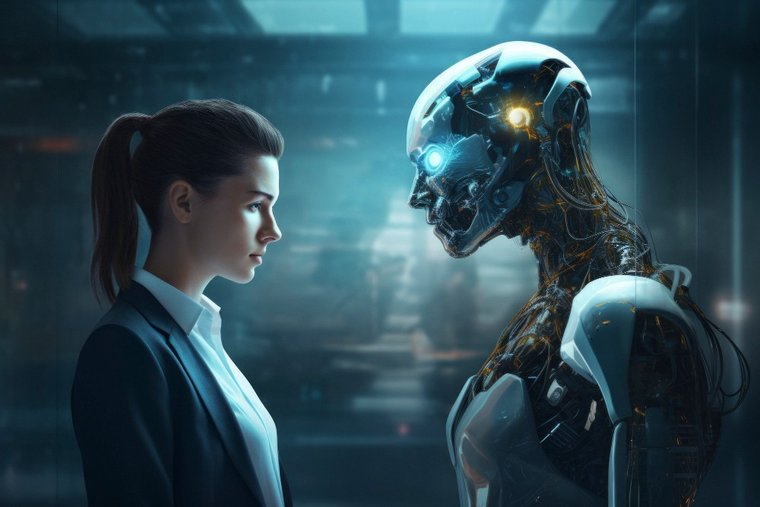
While the Sora model holds tremendous potential, it’s important to recognize the potential risks associated with this powerful AI tool. Here are some key concerns:
- Misinformation and Deepfakes
Sora’s ability to generate realistic videos raises concerns about the creation and spread of misinformation and deepfakes. Malicious actors could use Sora to fabricate videos of events that never happened, potentially eroding public trust and causing widespread confusion. - Ethical Biases
AI models in general—and Sora in particular—can inherit biases present in the data they were trained on. This can lead to the creation of discriminatory or offensive content based on factors such as race, gender, or ethnicity. Mitigating these biases requires careful consideration of training data selection and ongoing monitoring of generated content. - Privacy and Security
The widespread use of AI-powered video generation tools like Sora raises questions about privacy and security. It can be difficult to distinguish between original videos and videos generated by AI, which can lead to privacy violations and misuse of personal information.
In addition, ensuring the security of underlying AI models and preventing unauthorized access is critical to preventing malicious manipulation.
Learn how AI can be used in medicine.
Job Displacement:
As AI video creation tools become more sophisticated, concerns may arise about job displacement in certain sectors, such as animation or video editing. It is important to consider the potential impact on existing jobs and explore opportunities to retrain and upskill individuals to adapt to the changing landscape.- Overreliance on AI Creativity:
While AI tools like Sora can be powerful creative tools, overreliance on them can stifle human creativity and imagination. Therefore, it is important to strike a balance between leveraging AI capabilities and maintaining human engagement in the creative process.
In conclusion, OpenAI’s Sora model promises a leap forward in the field of video generation, offering a powerful and innovative method for creating video from text commands. Whether you want to use it for personal, entertainment, or business purposes, Sora is an excellent, easy-to-use option with a wide range of options.
However, you should consider the potential risks of this tool, such as those related to privacy and forgery, as well as the potential replacement of many jobs in the field of video production and editing. Therefore, we recommend starting to learn how to use such tools in your field of work, so that they can be an addition to your work, rather than a threat!
Finally, don’t forget to subscribe to our website and feel free to browse the rest of the artificial intelligence articles on Forsa, which provide you with everything new in this field in an easy and simplified manner.



